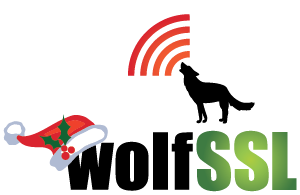We’re happy to announce that we’ve added support for Renesas RH850 in wolfHSM. The RH850 Family of 32-bit automotive microcontrollers (MCUs) is an automotive microcontroller equipped with an integrated Hardware Security Module (HSM). It ensures fast and secure key management, cryptographic processing, and authentication at the hardware level. Designed for next-generation ECUs, it combines functional […]
Read MoreMore TagCategory: Uncategorized
wolfSSL Java JSSE Provider Supports DTLS 1.3
wolfSSL’s Java JSSE provider (wolfJSSE) now supports DTLS 1.3! This support includes DTLS 1.3 on both client and server side through the SSLEngine interface. This support can be found in the wolfssljni GitHub master branch, and will be included in the next stable release. Benefits of DTLS 1.3 DTLS 1.3 (see RFC 9147) brings improved […]
Read MoreMore TagXilinx vs STM: wolfSSL Integration and Build Experience Compared
Selecting the right hardware for an embedded project can be a complex decision—but choosing a security library doesn’t have to be. wolfSSL offers broad platform support, running seamlessly on everything from bare-metal systems to full-featured operating systems. In this post, we’ll compare how wolfSSL integrates with two widely used embedded platforms: Xilinx and STM. While […]
Read MoreMore TagSecure Your Oracle Linux 8 Deployment with wolfSSL’s FIPS 140-3 Validated Module
If you’re stuck on OL8 for some reason, have no desire to migrate to OL9 or later, and still need FIPS support for OpenSSL 1.x, then we can help with our FIPS 140-3 module, which plugs into the OpenSSL 1.x engine interface. If you have questions about FIPS, please reach out to us at fips@wolfssl.com. […]
Read MoreMore TagLive webinar: Open Source Secure Boot Meets Open Hardware: wolfBoot Integration with TROPIC01 Secure Element
Join us for an exciting webinar showcasing the integration of the TROPIC01 secure element with wolfBoot, bringing open source secure boot down to the hardware level. Register Now: Open Source Secure Boot Meets Open Hardware: wolfBoot Integration with TROPIC01 Secure Element Date: June 25th | 9 AM PT The Tropic Square team has integrated support […]
Read MoreMore TagwolfTPM Support for Das U-Boot
wolfTPM now includes support for Das U-Boot, extending TPM 2.0 access to early boot stages in secure embedded systems. This port enables direct TPM communication in U-Boot environments using software SPI and provides both native and high-level APIs for flexibility. Key Features SOFT SPI Driver Full TPM 2.0 command set Both native API and wrapper […]
Read MoreMore TagwolfTPM Support for Zephyr RTOS
wolfSSL now has support for Zephyr RTOS through a newly added wolfTPM Zephyr port. This enables easy integration of TPM 2.0 functionality in embedded projects using Zephyr, expanding the flexibility and portability of secure applications. Below is a summary of the key features introduced in the PR#395: Key Changes and Features Zephyr Module Integration wolfTPM […]
Read MoreMore TagFIPS 140-3 Compliance for GnuTLS
We’re excited to announce the next phase in our wolfCrypt-GnuTLS integration: full FIPS 140-2 Level 2 compliance and FIPS 140-3 validation capabilities! This enhancement builds directly on our ongoing work to bring wolfCrypt’s powerful cryptographic capabilities to GnuTLS. Unlike traditional approaches that require extensive application rewrites, our solution continues to operate entirely behind the scenes. […]
Read MoreMore TagOpen Source Secure Boot Meets Open Hardware: Announcing wolfBoot Integration with TROPIC01 Secure Element
We are excited to announce our new partnership with Tropic Square and the integration of wolfBoot with their TROPIC01 secure element. Tropic Square has developed an open architecture hardware secure element for applications, including IoT devices, crypto wallets, or any modern application that prioritizes security. Unlike most hardware secure elements, the TROPIC01 solution is built […]
Read MoreMore TagLive Webinar: How to get FIPS 140-3 for YOUR Linux Distro
If your product is built on Linux and targets government or regulated industries, FIPS 140-3 compliance is essential. Join us for a webinar to learn how to bring your Linux-based system into compliance using wolfCrypt, the world’s first SP800-140Br1 FIPS 140-3 validated cryptographic module. Register Now: How to get FIPS 140-3 for YOUR Linux Distro […]
Read MoreMore Tag
